
Growing Celery: Planting, Cutting & Harvesting
Celery is a versatile plant from which different parts are harvested and used depending on the type of cultivation. It is often used in the kitchen to season dishes and as a soup vegetable. However, celery is not easy to grow and requires a lot of warmth, time and care to grow. In this article, you can find out what you should bear in mind when planting celery, what types of celery there are and how to harvest and store celery.
This Article Contains:
- Celeriac, Celery Tuber & Co: These Types of Celery Exist
- Propagating & Sowing Celeriac
- Growing Celery: Location & Planting Distance
- Celery Care & Fertilization
- Companion Planting With Celery
- Harvesting & Cutting Celery
- Freezing, Storing & Preserving Celeriac
- Preserving, Pickling & Fermenting Celeriac
- Frequently Asked Questions About Planting, Cutting & Harvesting Celeriac
Quick Overview
Different Celery Types
- Depending on which part of the celeriac you mainly want to harvest, you should grow the different varieties of celeriac:
- Celeriac for its bulb (mainly for soup vegetables and stews).
- The stalks of celery are used raw in salads or smoothies.
- The leaves of cutting or leaf celery are used fresh as a spice, similar to parsley.
Growing Celery: Cultivation Tips
- Pre-culture in March due to long cultivation period (germination temperature: 20 ° C/68 ° F, later between 15 - 18 ° C/59 - 64 ° F).
- Light germinator, so only cover thinly with soil.
- Planting distances: celeriac: 40 cm x 50 cm//15.7 x 19.7 in, celery: 30 cm x 40 cm/11.8 x 15.7 in, cutting or leaf celery: 20 cm x 30 cm/7.9 x 11.8 in.
- Plant out in May after the last frosts in a sunny to semi-shady, nutrient-rich location.
- Harvesting celeriac: first parts of perennial and cut celeriac in summer as soon as the plant is strong, celeriac from the end of September/October.
Celeriac, Celery Tuber & Co: These Types of Celery Exist
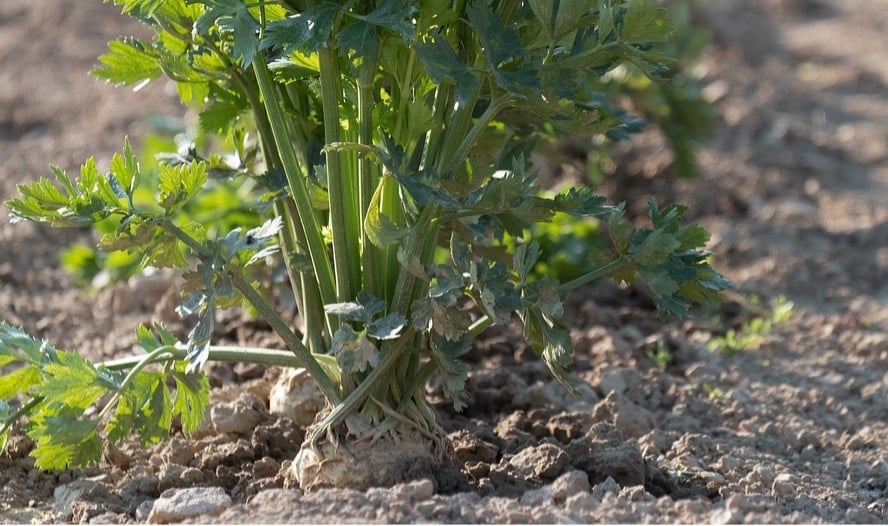
All types of celery belong to the umbellifer family (Apiaceae) and are among the more demanding crops, as they require a lot of care and have a very long cultivation period. Pre-cultivation is therefore particularly recommended for tubers and celery stalks. They are sensitive to frost and can therefore only be planted outdoors after the last frosts. The following three cultivated forms of celery (Apium graveolens) are popular for growing in the garden and for use in the kitchen. Celery is part of the celery genus (Apium).
Celeriac
Celeriac (Apium graveolens var. rapaceum) is the best known and most widely used variety of celery. It forms a large tuber underground, which is very rich in nutrients, just like the other types of celery. It is most commonly used in soups, but is also popular in stews or as a meat-free alternative to cutlets.
Celery, celery stalks & white celery
Celery, also known as celery stalks or white celery (Apium graveolens var. dulce), forms long, thin stalks which, unlike celeriac, grow above the ground. They are particularly crunchy and are often eaten raw in salads. Celery contains lots of vitamins such as calcium, potassium, magnesium and vitamin E, while being low in calories. Celery stalks are also very good in smoothies.
Celery can also be cultivated in containers or raised beds. The cold-sensitive plants can then be better protected from frost. Celery is also known as bleached celery, as the stalks are often bleached by protecting them from the sun a few weeks before harvesting. To do this, they are mounded with soil. This makes the taste milder and less intense later on.
Cutting or Leaf Celery
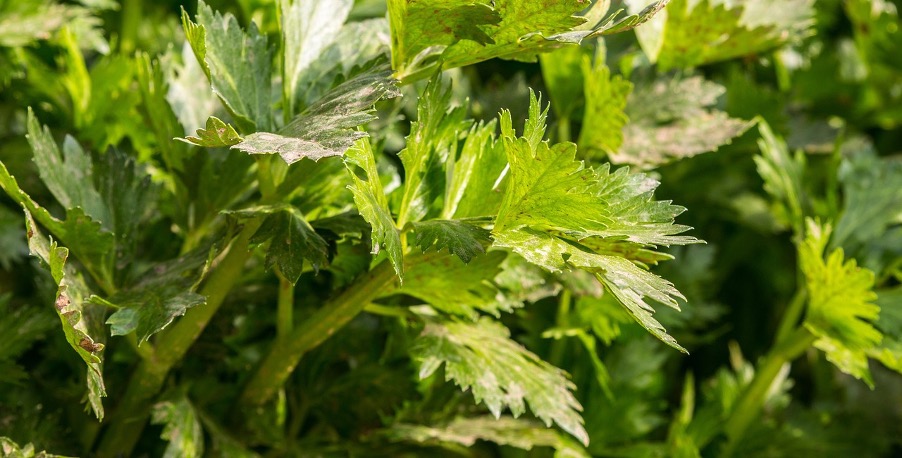
Cut celery (Apium graveolens var. secalinum) is grown for its aromatic leaves. In April or May, after the last frosts, you can sow the seeds directly outdoors or pre-grow them indoors in March if you want an earlier harvest. Cut celery is used like parsley in cooking and adds an aromatic spice to dishes.
Propagating & Sowing Celeriac
Although celery is a root vegetable, it is best to pre-cultivate it indoors if you do not have a warm cold frame or greenhouse. Root vegetables are often not preferred because of their delicate roots, which are easily damaged. If the young plants are repotted, the vegetables often cannot grow well. However, as it has a very long cultivation period and is sensitive to frost, you should prefer celeriac in particular, but also celery stalks. Otherwise, the plants won't have enough time to develop and you won't get a good harvest.
Pre-breeding begins between February and March, around 10 - 12 weeks before the planned planting out in May. The germination temperature is around 20 ° C/68 ° F. To speed up germination, you can also soak the seeds overnight in lukewarm water or chamomile tea. As celery is a light germinator, you should only lightly cover the seeds with soil.
As soon as the seeds have germinated (after approx. 2 weeks), you should place them in a slightly cooler place, but not below 15 ° C/59 ° F, as they will then sprout easily. Once the young plants have formed their first true leaves, you should prick them out very carefully and place them in slightly larger pots. This will give them enough space to grow strong enough for planting out. You should also start fertilizing them about 2 weeks after pricking out to help them grow. You can find out what else you should consider when propagating in our article Propagating Vegetable Seedlings.
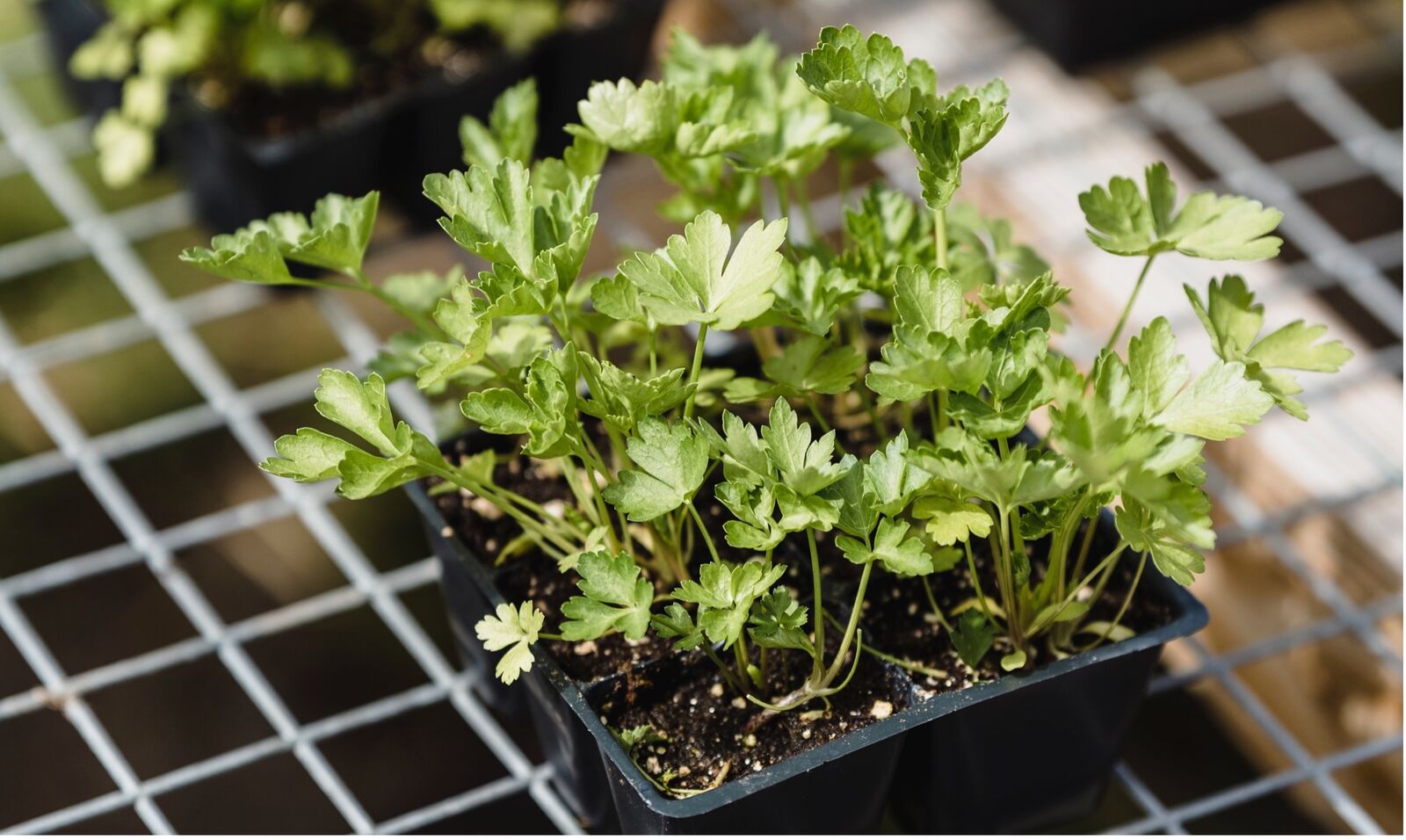
Growing Celery: Location & Planting Distance
Celery needs a sunny to semi-shady location with well-drained, nutrient-rich soil. Celery does particularly well in soil with a low lime and salt content (pH value around 7). If your soil is only slightly calcareous, you can add a little garden lime or crushed eggshells to the planting hole when planting. For a dose of salt, you can water your celery once a month with a little salt water (1 teaspoon of table salt, iodine-free, in 10 L/21 pt of water).
The planting distances for the individual types of celery differ and you will find them listed below. For more detailed information on individual varieties, take a look at our encyclopaedia.
Planting distances:
- Celeriac: 40 x 50 cm/15.7 x 19.7 in
- Celery: 30 x 40 cm/11.8 x 15.7 in
- Leaf Celery: 20 x 30 cm/7.9 x 11.8 in

Want to Learn More About Plants?
In our library you will find information on the individual varieties with cultivation periods, tips on planting, spacing and harvesting. You will also find good and bad companion plants to help you plan a mixed crop.
View Library NowCelery Care & Fertilization
Before planting out, you should acclimatize your young plants to the conditions outside. To do this, place them outside for a few hours every day and slowly increase the time they spend outside. As soon as the temperature is above 10 ° C/50 ° F during the day and there is no longer any threat of frost, they can be taken outside. You can find more information on exactly how to do this in our article Hardening Off Plants.
The planting depth is important when planting out celeriac. As root vegetables have sensitive roots, you should be particularly careful when planting them in the soil. If celeriac is planted too deep, the roots can become deformed and a good tuber will not form. It is best to use the depth of the celery plant in the growing pot as a guide.
Celery is a heavy feeder, so you should provide your plants with additional nutrients, e.g. liquid fertilizer, every two weeks or so to ensure they develop vigorously. Regular watering and weeding is also important to prevent your plants from dying.
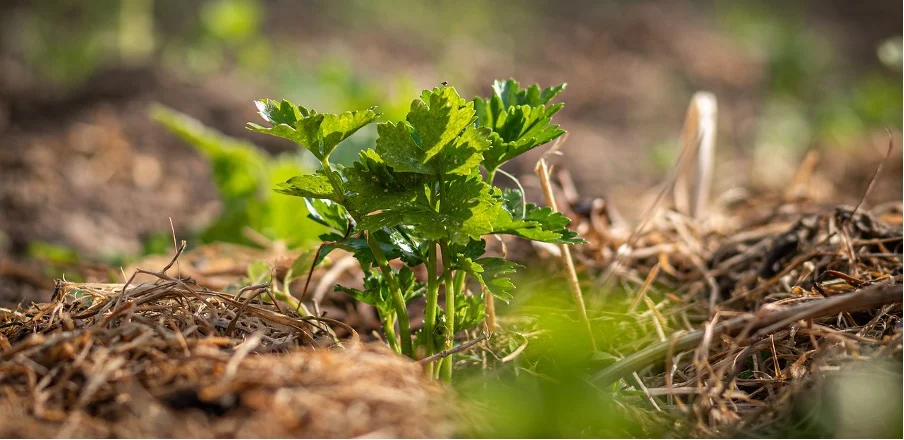
Companion Planting With Celery
You can grow celery well with beans, cucumbers, cabbage, leeks, spinach and tomatoes. Celery is particularly suitable for cabbage plants as a neighbor, as its intense smell keeps the cabbage white butterfly away from your cabbage plants. At the same time, a mixed culture with cabbage plants also protects the celery itself from the celery fly, which likes to lay its eggs on celery plants. Alternatively, you can stretch crop protection netting over your celery plants. Bad neighbors for celery are potatoes, corn and lettuce. Green manure is an excellent pre and post-crop to enrich the soil with nutrients.
Celery is often affected by leaf spot disease, so it is important to maintain sufficient distance between plants when growing and in mixed cultivation. In addition, you should not grow celery in the same place for several years in a row, but alternate the bed. This prevents the disease from establishing itself in the soil.
You can find even more information on this topic and on good and bad neighbors, as well as sample planting plans for a mixed culture, in our article Companion Planting With Celery.
Harvesting & Cutting Celery
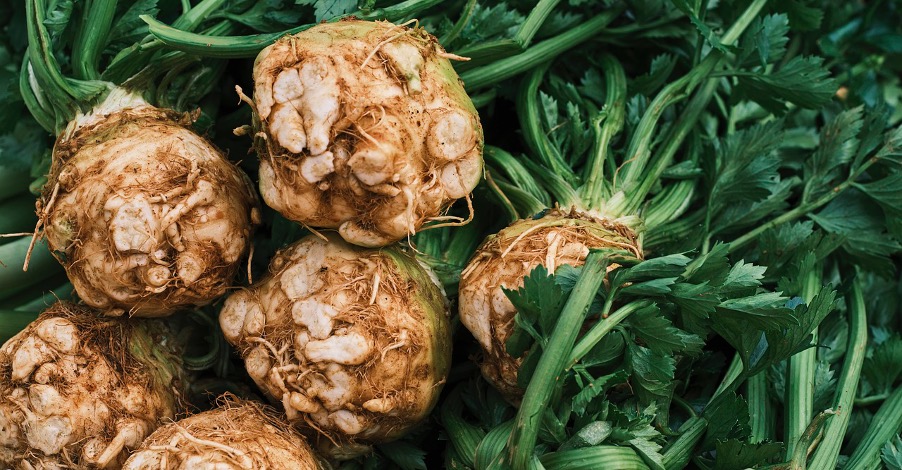
Celery can be harvested as soon as the plants have reached the desired size. Then pull the tubers or stalks out of the soil by the stalks or dig them out carefully. Do not wash the tubers before storing them, as this promotes rotting and therefore shortens their shelf life. Just brush off the soil a little.
You can harvest celery stalks as soon as they have reached a sufficient height; they will even grow back if you leave the heart standing. It is therefore best to cut off individual stalks from the outside, but leave a few stalks in the middle. With cut celery, the leaves are cut off as required and harvested when you want to use them.
When Do You Harvest Celery?
Celery tubers are usually harvested between September and November before the first frosts. The tubers should have a diameter of approx. 10 cm/3.9 in. Celery is ready to harvest when the stalks have grown vigorously. You can harvest individual stalks in summer, but the whole plant should be taken out of the ground before the first frosts at the latest.
Freezing, Storing & Preserving Celeriac
You can storeceleriac for the winter by cutting off leaves, roots and rotten areas from the tubers. Place the tubers in damp sand and store them in a cool but frost-free, dark place with high humidity. You can simply wrap celery in some paper once you have cut off the leaves and then store it in a box of sand for a few weeks. You can find out how you can store vegetables over the winter without a cellar in our article on Storing Vegetables: How the Earth Clamp Works.
You can freeze all parts of celeriac after harvesting to preserve it for longer. Celery can be kept in the freezer for between 6 - 12 months. Celeriac can be frozen directly by simply peeling it and cutting it into small pieces. You should also cut celery stalks into small pieces, as this makes it easier to defrost later. Celery also needs to be boiled in water for three minutes and quenched before you can freeze it.
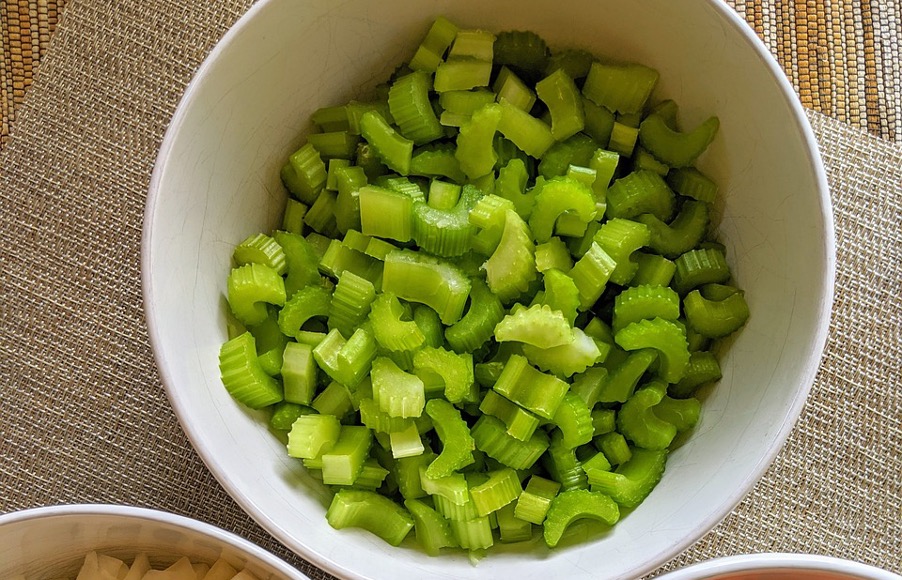
Preserving, Pickling & Fermenting Celeriac
Pickling and fermenting celeriac is another way to extend the shelf life of your vegetables. This involves cutting the celeriac tubers into small pieces and pickling or boiling them in vinegar or oil. Adding spices and herbs gives your celeriac an intense flavor. Celery leaves are ideal for drying and can therefore be preserved for longer. You can find out more about preserving vegetables in our article on Preserving Vegetables.
If you have any questions or comments, please write to us at [email protected]. Would you like to receive helpful gardening tips all year round and plan your own beds optimally? Then register here or download the Fryd app for Android or iOS.
Fryd - your digital bed planner
Cover picture by Leopictures on Pixabay.

Marielena
Marielena studies agricultural and environmental sciences. She gardens at home and at an allotment and likes to try out new things.
Learn MoreCurrent Topics in the Community
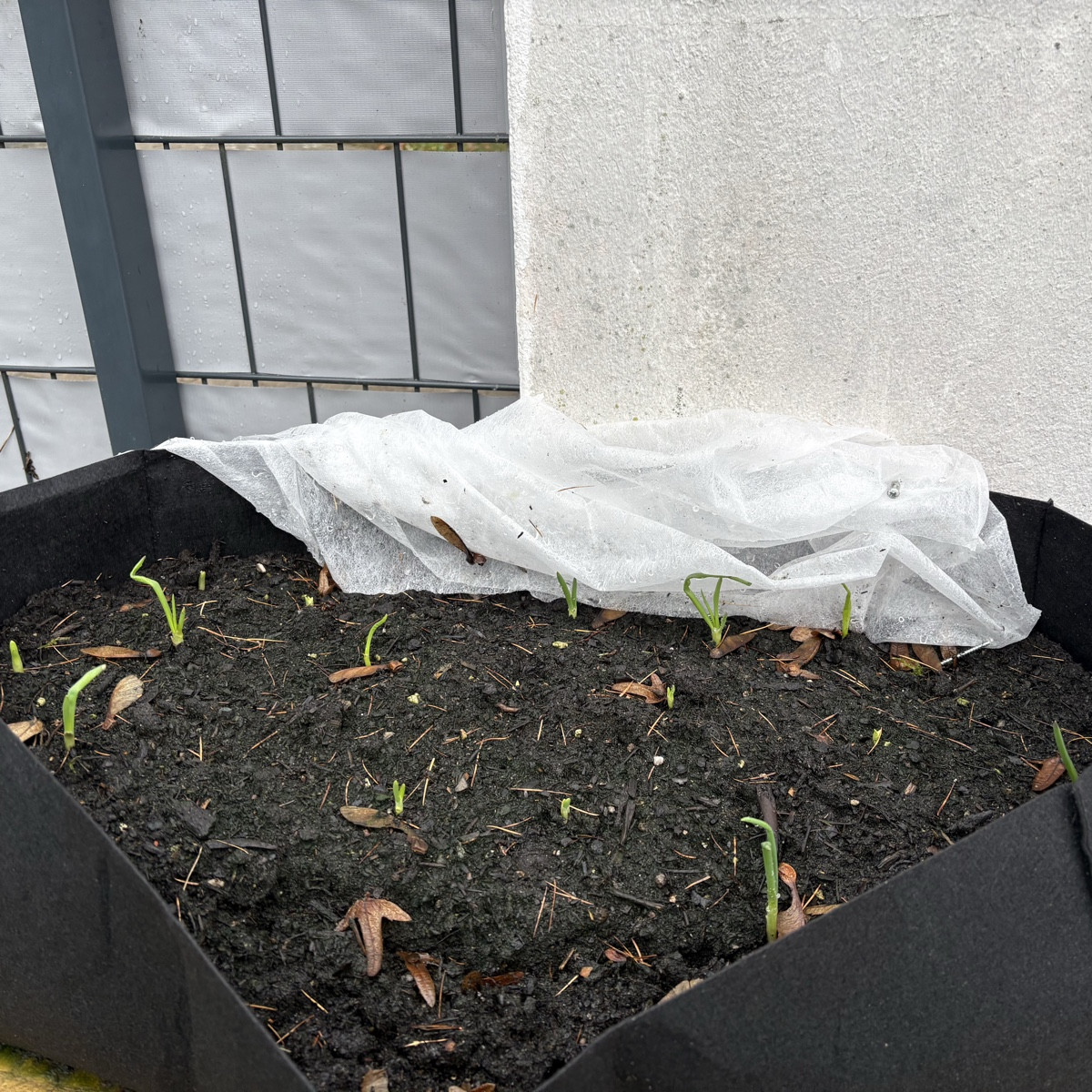
Liked 1 times
My winter onions are also growing quite well. They are of the Red Cross variety. I planted them on 28.10 in a felt pot 60x30x20 cm
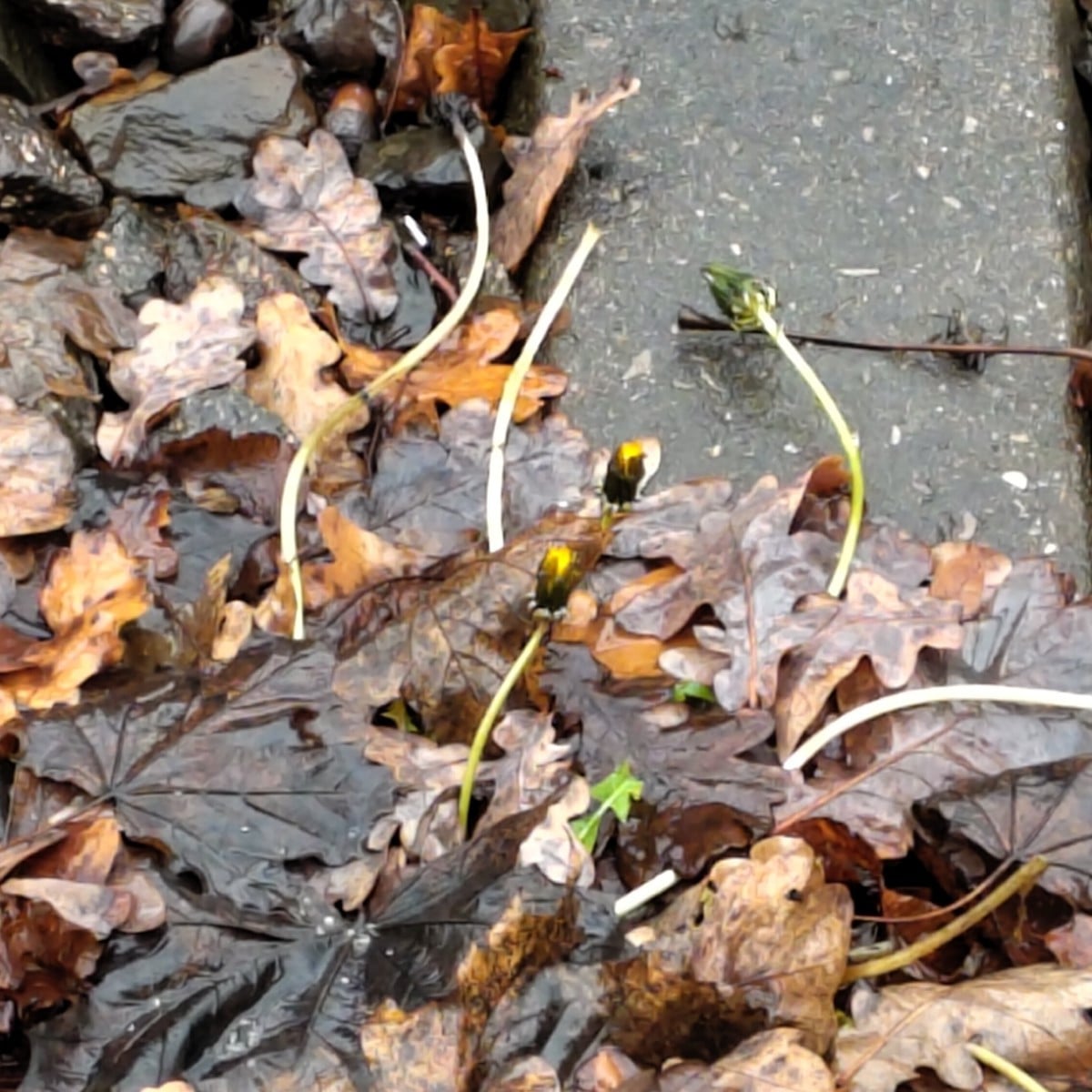
Liked 6 times
Another post from the curiosities section: I noticed this dandelion at the streetcar stop in a 'wintry' 13°C weather. It obviously thinks that snow and double-digit frost were enough winter and is now pushing new flowers through the foliage. It's a shame it's by the tracks, otherwise it would probably have ended up in my salad. 😋
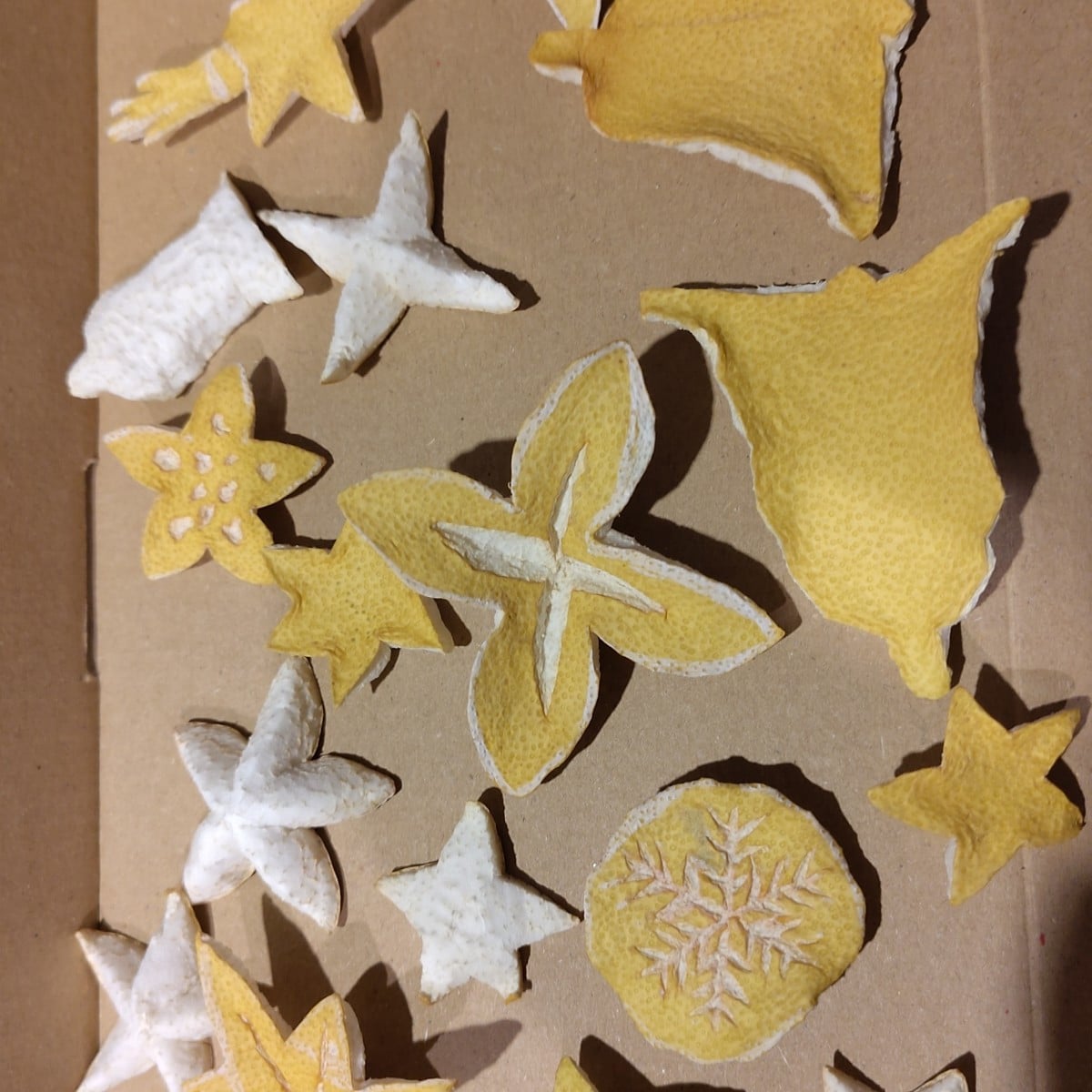
Liked 16 times
As a suggestion for those who eat citrus fruits and have some time in the evening: simply cut a few simple shapes out of them with a sharp knife and dry them on the heater. The next day it was bone dry in our house ;)
Show 3 answersPopular Articles

Overwintering Parsley: How to Do It Successfully

How to Grow Lettuce in Winter: Varieties, Sowing, Harvesting

Growing Sage Plant: Tips for Sowing and Harvesting

What Herbs Can Be Planted Together?

Create & Design a Permaculture Garden

Overwintering Plants: Tubs, Pots and Raised Beds

Pruning, Fertilizing & Propagating Currants: Care Tips

Pruning Raspberries: How to Do It

Vegetable Garden With Greenhouse: How to Use Greenhouse Effect

Winterizing Beds and the Garden: How to Do It
FAQ
Yes, celery is a biennial plant. However, due to the cold winter in Germany, they cannot overwinter outside. However, if you grow them in a pot or greenhouse, you can also overwinter the plants. They will then produce flowers and seeds the following year.
How long does celeriac take to harvest?
Celeriac has a long cultivation period and, if sown in March, needs until September/October before you can harvest it.
Celery grows best in sunny to semi-shady, warm locations with humus-rich, loose soil. Celery also thrives in lime- and salt-rich soil. The soil should not dry out, as celery can then tend to bolt.
What can you plant next to celery?
You can plant beans, cabbage, leeks and tomatoes alongside celery. They complement each other's needs and help protect each other against diseases and pests.